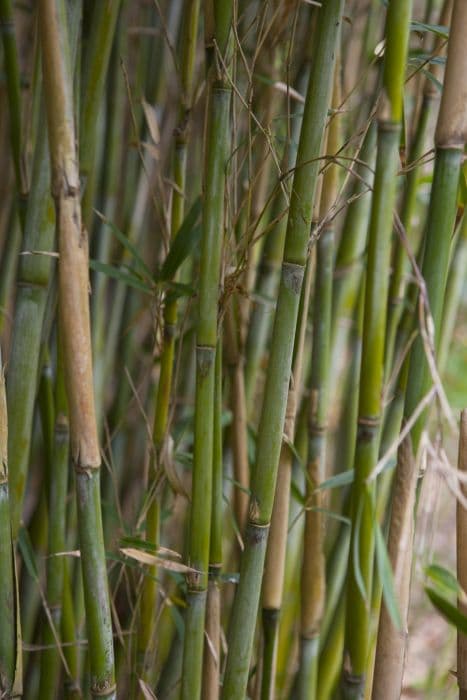Maiden Grass Miscanthus sinensis 'Gewitterwolke'
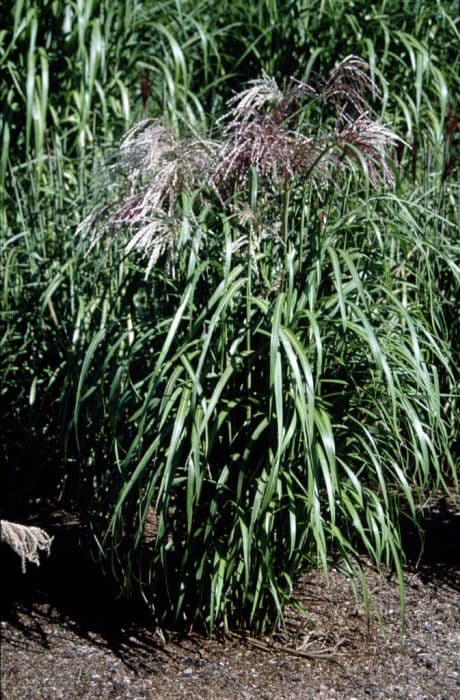
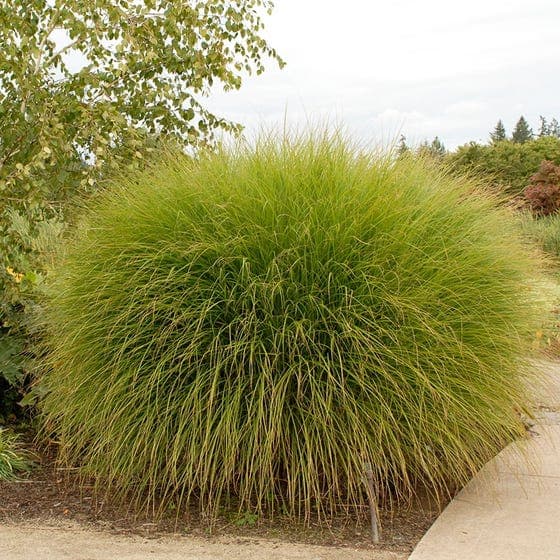
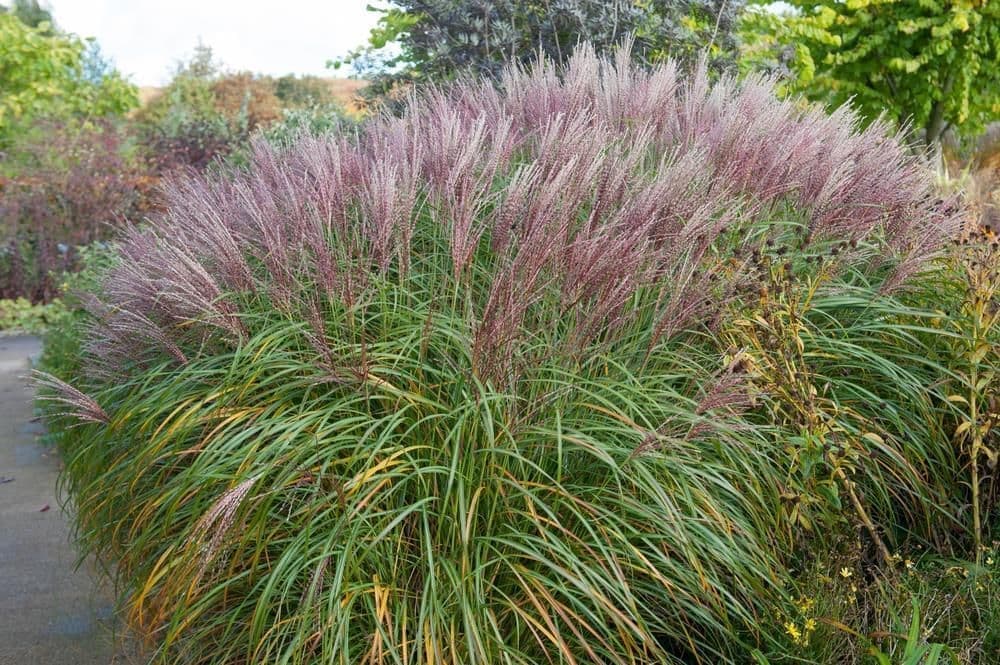
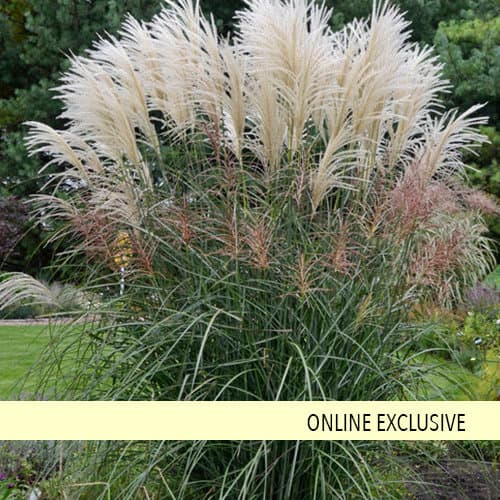
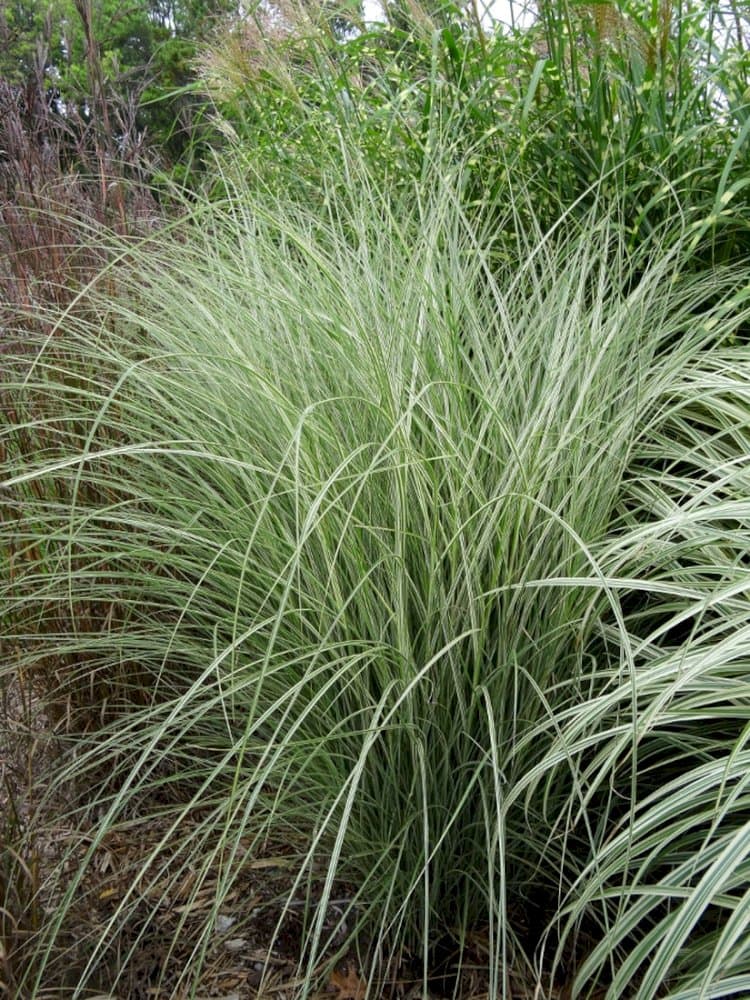
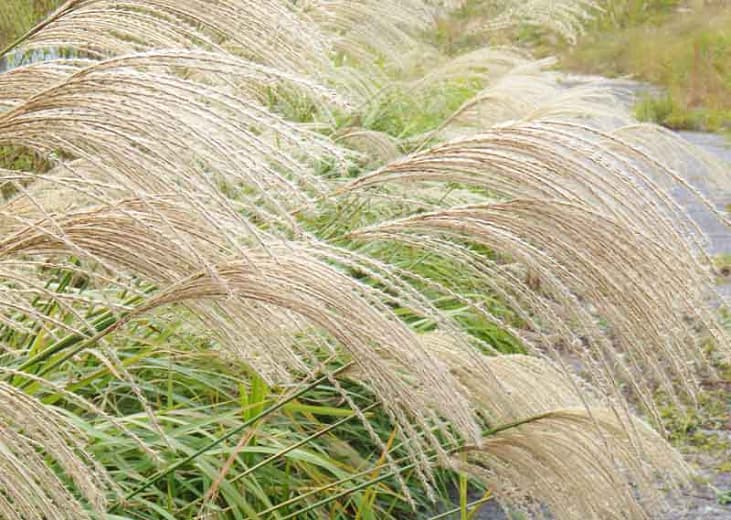
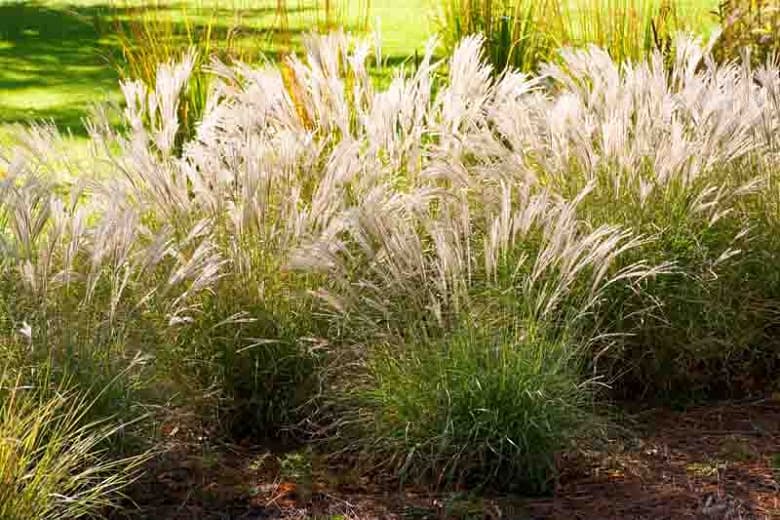
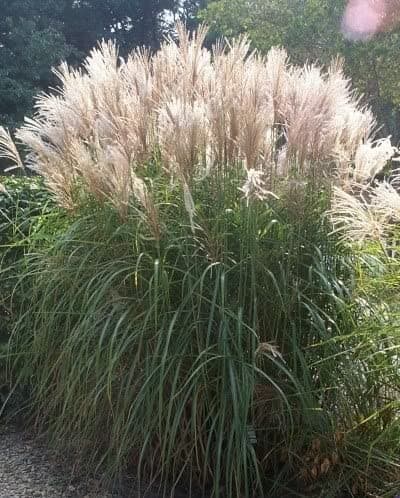
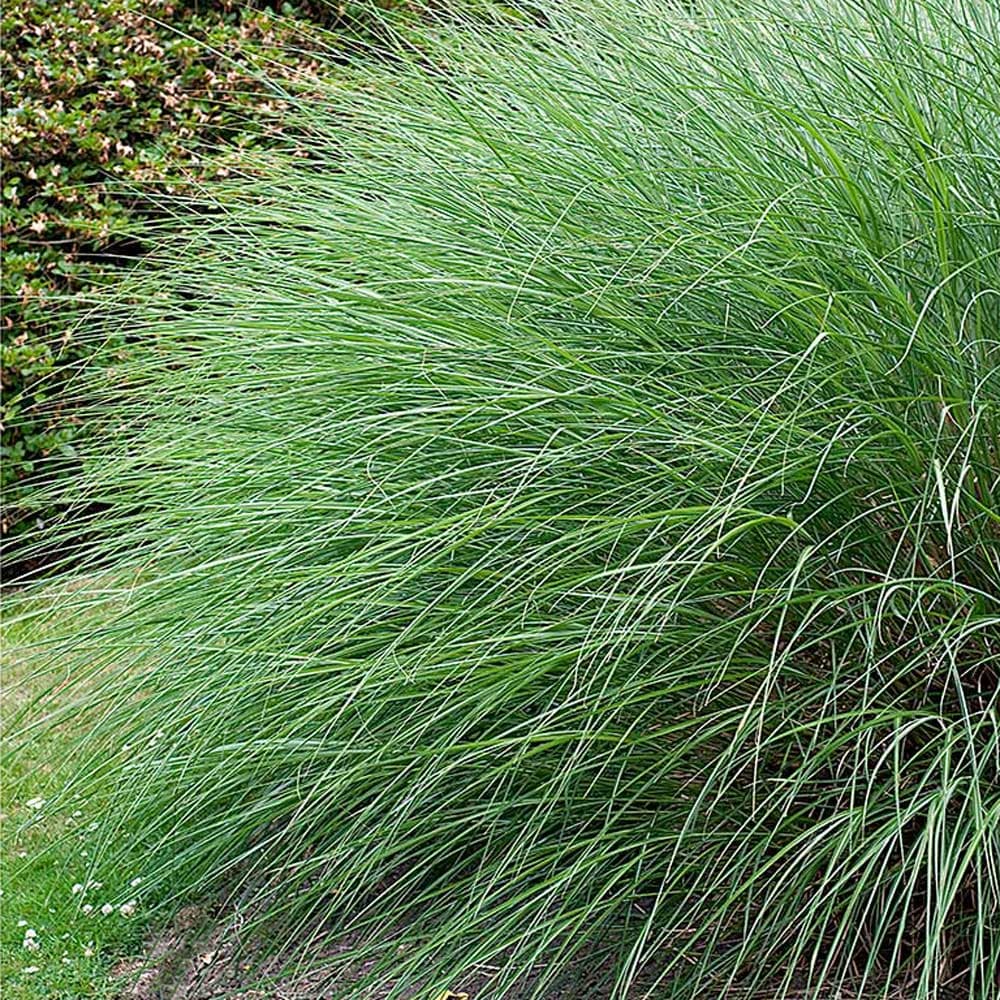
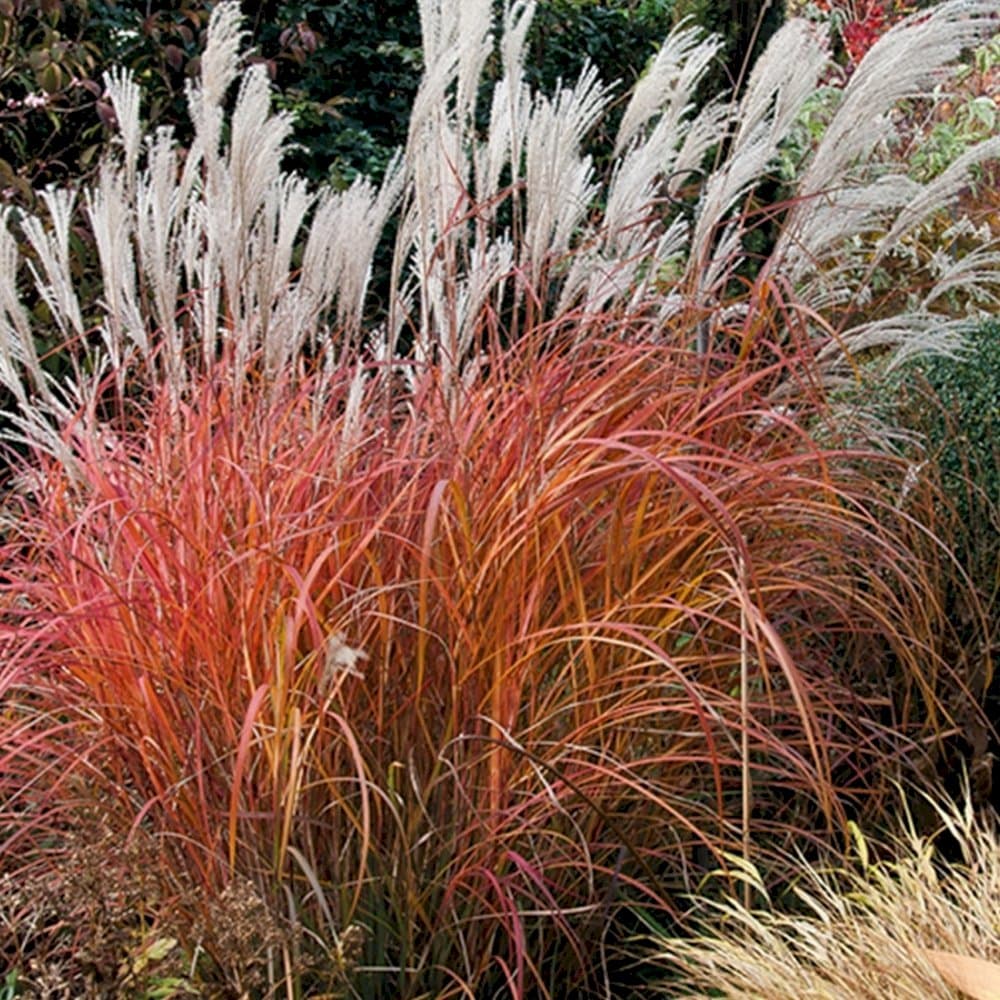
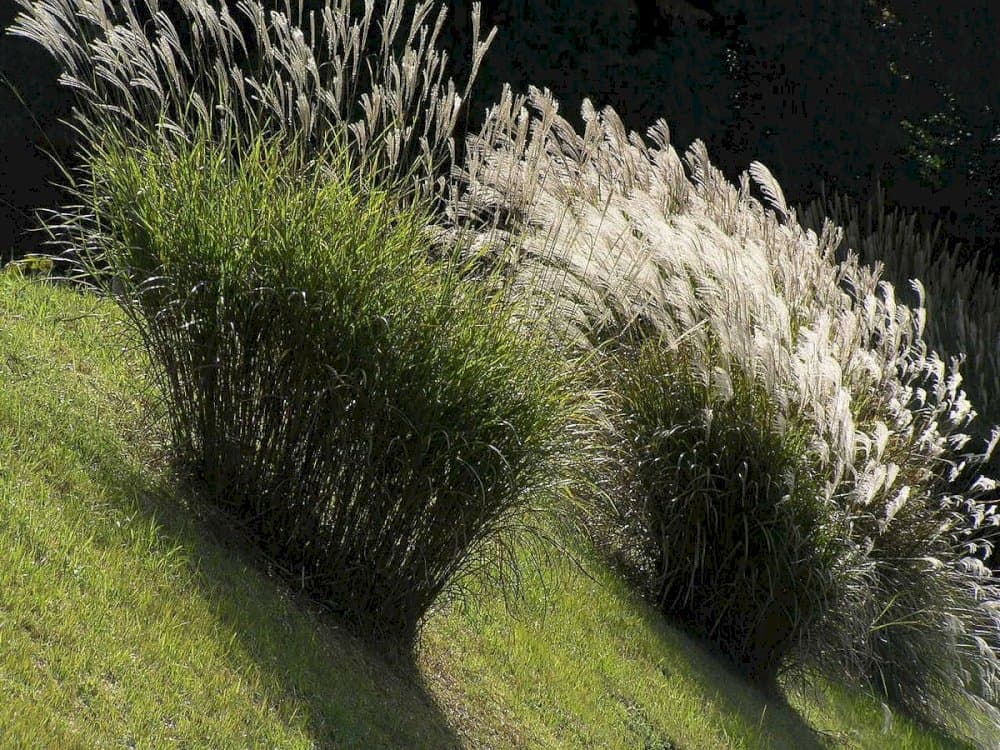
ABOUT
The plant known as Maiden Grass 'Gewitterwolke' presents a striking appearance with its gracefully arching foliage. The leaves have a unique texture and are a lush shade of green, with delicate silver veins running through them. As the seasons change, the green of the foliage takes on warm, golden hues, adding a touch of autumnal charm to the garden. One of the most distinctive features of this Maiden Grass are its flower plumes. These emerge above the leaves, exhibiting a soft, feathery look that sways gently in the breeze. The flowers start with a reddish or purplish tint and as they mature, they transform into a silvery white that seems to catch the light. Their fluffy texture and coloration can give the appearance of storm clouds rolling in, hence the name 'Gewitterwolke', which translates to 'thundercloud'. Overall, Maiden Grass 'Gewitterwolke' has a natural, fluid form that makes it a lovely garden specimen. As a clumping grass, it holds its shape throughout the growing season and into the winter, providing structure and interest even in colder months. The foliage and plumes of this Maiden Grass create a visual softness that complements more structured plants and can be used to great effect in garden design, where it captures the eye without overpowering other plantings.
About this plant
 Names
NamesFamily
Poaceae
Synonyms
Gewitterwolke Maiden Grass, Thundercloud Silver Grass, Storm Cloud Maiden Grass
Common names
Miscanthus sinensis 'Gewitterwolke'.
 Toxicity
ToxicityTo humans
Maiden grass is not known to be toxic to humans. There are no significant reports or symptoms related to poisoning from ingestion of this plant's parts.
To pets
Maiden grass is also not known to be toxic to pets. It is generally considered safe and there aren't documented cases of poisoning in pets, such as dogs or cats, from consuming parts of this plant.
 Characteristics
CharacteristicsLife cycle
Perennials
Foliage type
Deciduous
Color of leaves
Green
Flower color
Varies
Height
4 feet 8 inches (1.42 meters)
Spread
3 feet (0.91 meters)
Plant type
Grass
Hardiness zones
5
Native area
Asia
Benefits
 General Benefits
General Benefits- Ornamental Appeal: Adds visual interest to gardens with its tall, arching stems and feathery plumes.
- Drought Tolerance: Once established, it is resistant to short periods of drought, making it easier to maintain.
- Seasonal Interest: Offers year-round beauty with changing foliage and flower colors throughout the seasons.
- Erosion Control: Its dense root system helps stabilize the soil and prevent erosion on slopes or banks.
- Low Maintenance: Requires minimal care after establishment, with no need for regular watering or fertilization.
- Habitat Creation: Provides shelter and food for wildlife, including birds and beneficial insects.
- Privacy Screening: Grows tall enough to act as a natural screen for privacy in gardens or landscapes.
- Tolerance to Poor Soils: Adapts to a range of soil conditions, even thriving in less fertile soils.
- Fall and Winter Interest: Retains its structure and offers visual interest in the garden even during the colder months.
- Adaptability: Can be used in a variety of landscape designs, from formal to naturalistic settings.
 Medical Properties
Medical PropertiesThis plant is not used for medical purposes.
 Air-purifying Qualities
Air-purifying QualitiesThis plant is not specifically known for air purifying qualities.
 Other Uses
Other Uses- Miscanthus as a Biofuel: 'Gewitterwolke' can be harvested and processed into pellets or bio-oil for use as a renewable energy source, contributing to the reduction of fossil fuel dependence.
- Erosion Control: The deep root system of Miscanthus sinensis helps stabilize soils on slopes and riverbanks, preventing soil erosion and promoting water quality.
- Acoustic Barrier: The dense growth of Miscanthus sinensis 'Gewitterwolke' can be used in landscaping to reduce noise pollution from roadways and industrial sites.
- Livestock Bedding: The dried leaves and stalks can provide a sustainable bedding material for farm animals, offering a comfortable and absorbent layer.
- Thatching Material: Traditionally, Miscanthus has been used for thatching roofs, and the 'Gewitterwolke' variety could be used similarly, creating an insulative and water-resistant covering.
- Handicraft Materials: The sturdy stems of Miscanthus sinensis can be used in weaving or making baskets, mats, and other artisan crafts.
- Natural Dye: The foliage and flowers of 'Gewitterwolke' could be used to extract natural dyes for textile coloring, offering a range of earth-toned hues.
- Garden Path Borders: The clumping nature of Miscanthus sinensis makes it suitable for defining the edges of garden paths or as a decorative border in landscape design.
- Mulch Material: Chopped or shredded Miscanthus can serve as an organic mulch, helping to retain soil moisture and suppress weed growth in garden beds.
- Wildlife Habitat: Miscanthus sinensis 'Gewitterwolke' can provide shelter and habitat for small wildlife, insects, and birds within its dense foliage, enhancing biodiversity.
Interesting Facts
 Plant Symbolism
Plant Symbolism- Adaptability: Miscanthus sinensis, commonly known as Maiden Grass, can thrive in a variety of soil conditions and withstand changes in climate, symbolizing the ability to adapt to different life circumstances.
- Resilience: This grass maintains its structural form even through the winter, representing resilience and the capacity to endure challenges.
- Privacy: When planted in groups, Maiden Grass can create a privacy screen, symbolizing the need for personal space or the creation of personal boundaries.
- Grace: With its elegant and feathery plumes, Maiden Grass suggests gracefulness and an airy, delicate beauty that can persist despite harsh conditions.
- Growth: As a fast-growing plant, it represents growth and development, both personally and professionally.
 Water
WaterMaiden Grass 'Gewitterwolke' requires consistent moisture, especially during the first growing season to establish a deep root system; after establishment, it becomes more drought-tolerant. Water this grass deeply once a week, providing about 1-1.5 inches of water which translates to approximately 0.6-0.9 gallons per square yard. During hot, dry periods, you may need to water twice a week. Reduce watering in the fall to prepare the plant for dormancy. Always check the soil moisture before watering to avoid overwatering; the soil should be moist but not waterlogged.
 Light
LightMaiden Grass 'Gewitterwolke' thrives best in full sun conditions, receiving at least 6 hours of direct sunlight daily. An ideal spot is in an open area where it can receive unfiltered sunlight throughout the day. While it can tolerate partial shade, too little light can lead to weak growth and fewer plumes.
 Temperature
TemperatureMaiden Grass 'Gewitterwolke' grows well in a range of temperatures, tolerating a minimum temperature of around -20°F and thriving in temperatures up to 90°F. The ideal temperature range for this ornamental grass is between 60°F and 75°F. It's hardy in USDA zones 5 through 9 and can withstand the temperature variations typical in these regions.
 Pruning
PruningPruning Maiden Grass 'Gewitterwolke' is crucial for maintaining its shape and encouraging vigorous growth. It's best to prune in late winter or early spring before new shoots appear, cutting the grass back to within a few inches above the ground. This annual pruning removes old foliage, making way for fresh growth, and it helps prevent self-seeding and potential invasiveness in some regions.
 Cleaning
CleaningAs needed
 Soil
SoilMaiden Grass thrives in a well-draining soil mix, rich in organic matter, with a pH range of 5.5 to 7.5. A good soil recipe could be a mixture of garden soil, compost, and perlite or sand to improve drainage.
 Repotting
RepottingMaiden Grass, being a large perennial, doesn't require frequent repotting and is typically repotted every 2 to 3 years or when it outgrows its container.
 Humidity & Misting
Humidity & MistingMaiden Grass prefers moderate humidity levels but is quite adaptable and can tolerate a range of humidity conditions prevalent in outdoor environments.
 Suitable locations
Suitable locationsIndoor
Ensure bright light, ample space, and large container for indoor Maiden Grass.
Outdoor
Plant in full sun, space well, mulch, water deeply till established for outdoor Maiden Grass.
Hardiness zone
4-9 USDA
 Life cycle
Life cycleMiscanthus sinensis 'Gewitterwolke', commonly known as Maiden Grass, starts its life cycle when seeds germinate in spring, given warm enough temperatures and sufficient moisture levels. The seedlings emerge and establish a root system, growing rapidly into clumps with long, slender leaves. Throughout the growing season, this perennial grass enjoys full sun and moist conditions, which contribute to its vertical growth and the development of distinctive, feathery flower plumes typically in the late summer or early autumn. As the weather cools, Maiden Grass transitions into a period of dormancy; its foliage and plumes turn from green to tan or bronze, offering ornamental appeal in the winter landscape. In spring, before the new growth begins, last year's growth is often cut back to the ground to make way for fresh shoots. Over time, the clumps may become dense and require division to maintain vigor and to propagate new plants.
 Propogation
PropogationPropogation time
Spring to Summer
For Miscanthus sinensis 'Gewitterwolke', also known as Storm Cloud Maiden Grass, the most popular method of propagation is by division. The best time to divide this plant is in the late winter to early spring, just before new growth begins. This gives the divided plants time to establish their roots before the growing season. To propagate by division, one should carefully dig up the clump of grass, ensuring a good portion of the root system is intact with each division. The plant should be divided into smaller clumps, ensuring that each section has several shoots or growing points. These divisions can then be replanted into prepared soil, spaced appropriately to accommodate future growth, typically about 3 to 4 feet apart (approximately 0.9 to 1.2 meters), ensuring they are watered well to help establish the new plants.
